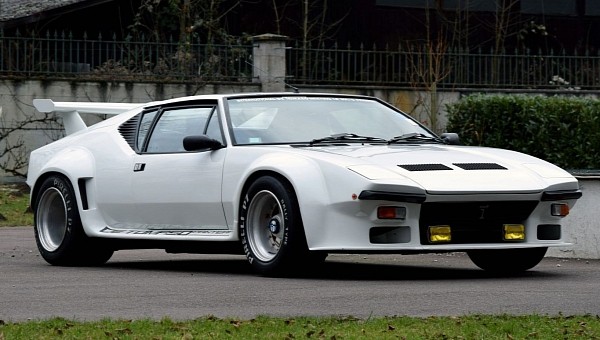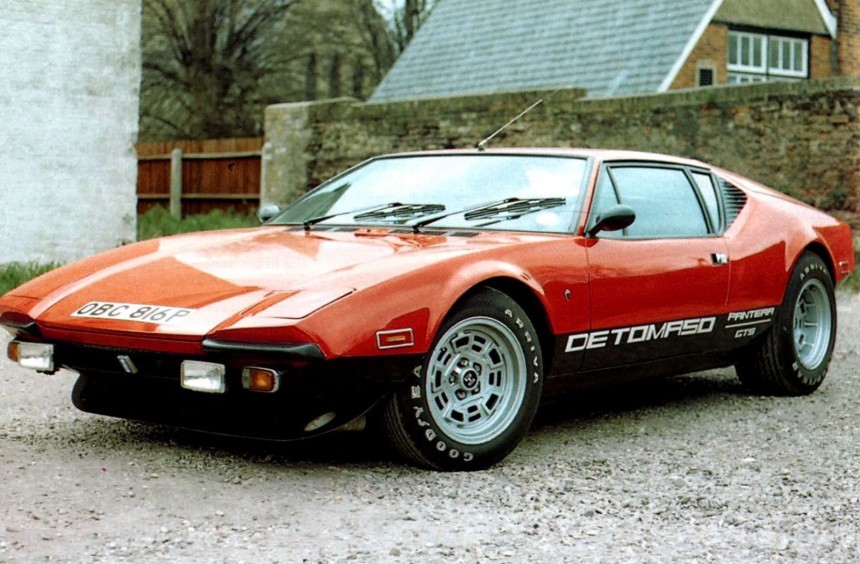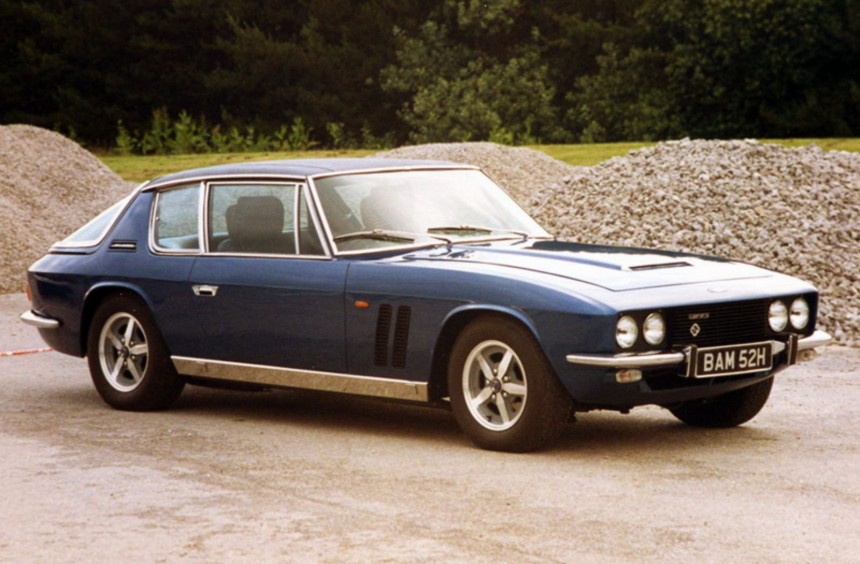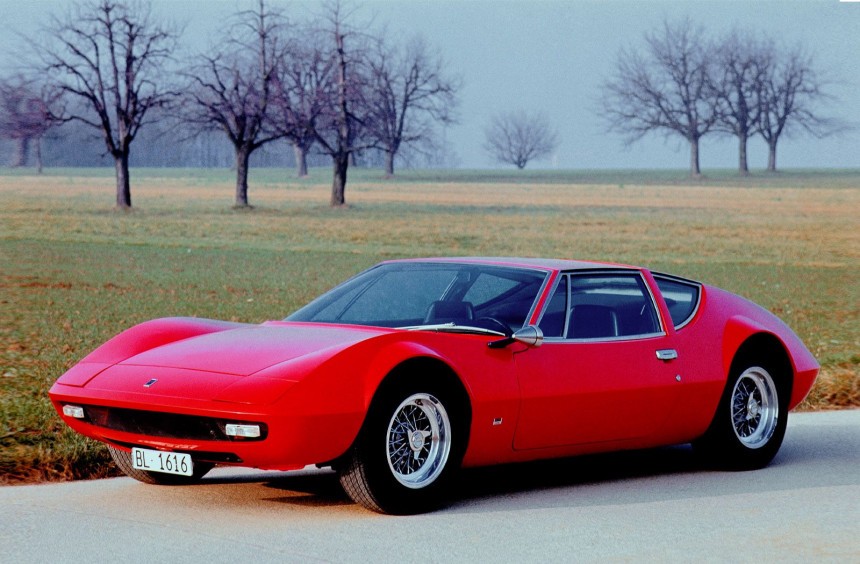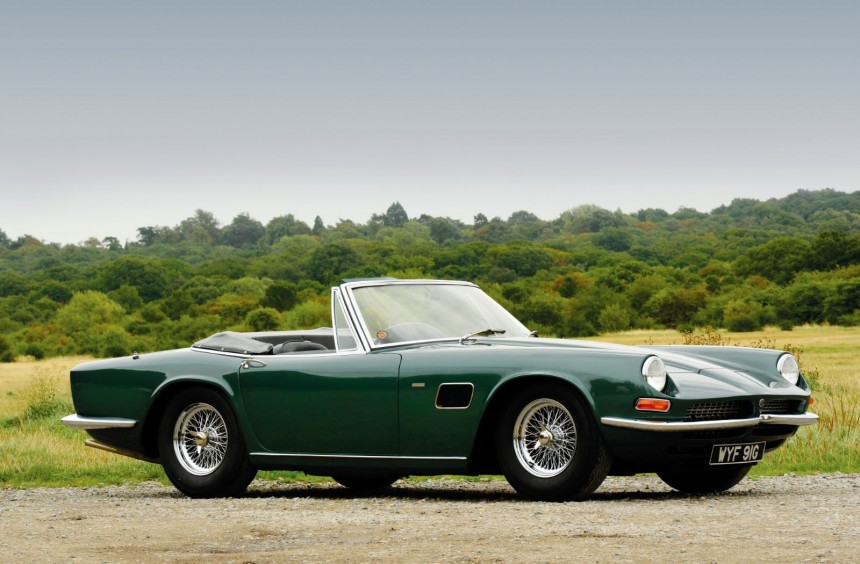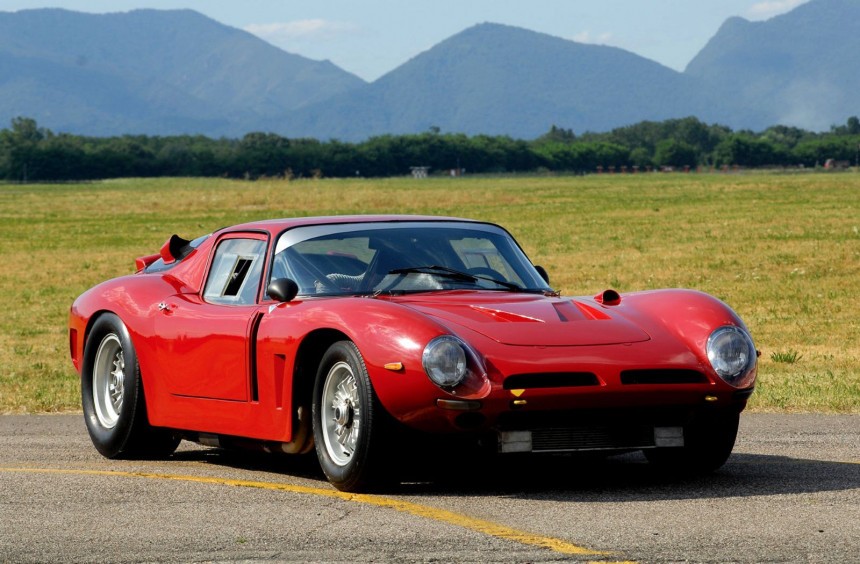Combining timeless European design with raw American muscle, these five classic supercars were created to offer the best of both worlds during the 1960s and 1970s.
In Europe, those two decades saw the introduction of some of the most iconic high-performance sports cars of all time. For many, the first that comes to mind is the Lamborghini Miura, which is considered the first true road-legal supercar, but the list also includes motorsport-derived legends like the Ferrari 250 GTO or 250 LM, Porsche 930 (aka 911 Turbo), or Maserati Bora, just to name a few.
Across the pond, the notion of a high-performance sports car took on a different meaning. With the exception of the Corvette, which was the only commercially-successful vehicle that was cooked up following the European recipe, the stars of the American automotive industry were affordable coupes with powerful V8s that became known as muscle cars.
While Europe had its fair share of amazing engines during that period, they were complex, more expensive to manufacture, and far more difficult to maintain. Thus, smaller carmakers who wanted to rival the likes of Ferrari, Lamborghini, Maserati, or Porsche were forced to import American V8s in order to keep development costs at bay. This gave birth to some interesting supercars that were not necessarily successful in terms of sales, yet delivered an awesome combination between European exotica and raw American muscle.
Unquestionably the most famous example of a European supercar powered by an American engine was the Italian-built Pantera. Unveiled in 1970 and unleashed on public roads about a year later, it was De Tomaso’s second attempt to deliver a serious challenger for the likes of Ferrari, Lamborghini, and Maserati, after the largely-unsuccessful Mangusta.
Developed around a state-of-the-art steel monocoque chassis, it featured a distinctly-European, wedge-shaped body designed by Carrozzeria Ghia's American-born stylist Tom Tjaarda.
The mid-mounted engine at the heart of this terrific car was also born in the U.S. The Italian company had a long-standing partnership with Ford so, like its predecessors, the Pantera was powered by a V8 designed in Detroit. Initially, it was an Australian-built 351-ci (5.8-liter) Cleveland capable of 330 hp (335 ps), but later versions received the American-built 345-hp (350 ps) Windsor with the same displacement. Finally, Series II models switched to a newer, 5.0-liter V8 with electronic fuel injection that was also used in the Fox-body Mustang, albeit it received extensive tuning that improved output to 305 hp (309 ps).
The Pantera is the only car on this list that was officially sold in the U.S. from 1972 to 1975 by Lincoln-Mercury dealerships. In Europe, it continued to be improved and marketed for two more decades, with the last car rolling off the assembly line in 1992.
Chances are that you’ve never heard about England’s amazing Jensen FF, because it wasn’t built by the county’s most popular carmakers, Aston Martin or Jaguar, and it never was a commercial success.
Despite this, the FF (short for Ferguson Formula) was one of the most innovative cars of its era. Designed and built in West Bromwich, England from 1966 to 1971, it was the first production car (non-off-road) equipped with four-wheel-drive as standard and it featured an anti-lock braking system (ABS) decades before it became commonplace.
While it used these highly-advanced systems, the upscale grand tourer was powered by a rather obsolete American V8: Chrysler’s 383-ci (6.3-liter) B-series. The flagship Mopar performance engine until the introduction of the 426 HEMI, this big-block produced no less than 330 hp (335 ps), enabling the FF to embarrass much lighter Italian supercars in a drag race. Even more impressive, an experimental FF with a 426 HEMI was also reportedly built, but it never made it into production because importing the Elephant was deemed too expensive.
The Jensen FF had a major flaw that prevented it from reaching commercial success despite being an amazing car. The complex design of its four-wheel-drive system made it impossible to build a left-hand drive version, so it was never officially sold outside of the UK. Moreover, it was prohibitively expensive, which meant that only 320 units were built during the five-year production run.
The Swiss are famous for chocolate, watches, and army knives, but during the 1960s, one man wanted to add high-performance sports cars to the list. His name was Peter Monteverdi, a successful businessman who made a fortune from importing Ferrari, Rolls-Royce, and Bentley models into the country.
The story goes that in 1963, Monteverdi decided to build his own supercars after a heated argument with none other than Enzo Ferrari. Five years later, he founded a company that bore his name and released a series of capable, Chrysler-powered grand tourers called High Speed.
However, Monteverdi’s most outrageous project was unveiled to the public at the 1970 Geneva Auto Show. Dubbed Hai (German for Shark) 450 SS, it was a lightweight, mid-engine Lambo Miura-killer powered by the most famous muscle car engine of them all: the 426 HEMI. Rated at 444 hp (450 ps), it allegedly enabled the Hai 450 SS to sprint to 62 mph (100 kph) from a standstill in 4.8 seconds and reach a top speed of close to 186 mph (300 kph).
Unfortunately, what could have been one of the most exciting supercars of the era did not make it into production. The main reason was a test conducted by Road & Track magazine that showed that the Hai was sensibly slower than advertised. This negative publicity led potential buyers to cancel their orders, which, in turn, made investors withdraw their support. In the end, Monteverdi’s plan to produce 49 examples failed miserably and only two examples were ever built.
Another beautiful English grand tourer that has long been forgotten, the Frua (also known as AC 428) was built from 1965 to 1973 by AC Cars, the manufacturer of the Cobra. In fact, the car was built around a slightly modified chassis shared with the Mark III Cobra 427, a model which became an automotive icon thanks to the legendary Carroll Shelby.
Its exquisite body – available as a fastback coupe or convertible – was designed and built by leading Italian coachbuilder Frua, the company founded by famed stylist Pietro Frua, who was also responsible for shaping the very similar Maserati Mistral.
Although it looked distinctively Italian, the English grand tourer was powered by pure American muscle. Conceived to compete with the likes of Ferrari, Lamborghini, or Maserati, the AC Frua needed plenty of power, so the engineers opted for the 428-ci (7.0-liter) Ford FE big block, which made 345 hp (350 ps). But some buyers wanted more power, so a few models received the Cobra Mark III’s 427 “side oiler,” which delivered 385 hp (390 ps).
Like the Jensen FF, the coachbuilt Frua was just too expensive for a car that didn’t come with Ferrari, Lamborghini, or Maserati badges, so AC only managed to sell 81 units in eight years.
Now 96 years old, Giotto Bizzarrini is one of Italy’s most influential engineers. Arguably his most famous project was the Lamborghini V12, the engine that powered the company’s flagship models from 1964 to 2010. But prior to that, he was the chief engineer for Scuderia Ferrari, where he played an integral role in the development of several road and race cars, including the 250 GTO.
Bizzarrini was forced to leave Ferrari in 1961, after a huge scandal that became known as “The Great Ferrari Walkout” and embarked on a series of projects for different companies. He also founded a car brand that bore his name and designed one of the most underrated Italian supercars of all time.
Called the 5300 GT, it was a continuation of the Griffo-based A3/C prototype race car that Bizzarrini developed while working with Iso Rivolta and the spiritual successor of the Ferrari 250 GTO. With a gorgeous low-slung body mounted on top of an advanced chassis, it was available in both competition (Corse) and road-legal (Strada) versions, powered by Chevy’s legendary “mighty mouse motor”.
Chosen for its affordability and reliability, the 327-ci (5.4-liter) small block was mildly tuned by Bizzarini to produce 365 hp (370 ps) in the Strada and 400 hp (405 ps) in the Corsa.
Between 1964 and 1968, the company built 133 road and race cars, one of which competed at Le Mans in 1965, finishing 9th overall and winning its class. A corporation called Pegasus Brands revived Bizzarrini and, apart from a future V12-powered hypercar named Giotto, it launched a revival series of the 5300 GT Corsa which will be produced in 24, ultra-expensive units.
Across the pond, the notion of a high-performance sports car took on a different meaning. With the exception of the Corvette, which was the only commercially-successful vehicle that was cooked up following the European recipe, the stars of the American automotive industry were affordable coupes with powerful V8s that became known as muscle cars.
While Europe had its fair share of amazing engines during that period, they were complex, more expensive to manufacture, and far more difficult to maintain. Thus, smaller carmakers who wanted to rival the likes of Ferrari, Lamborghini, Maserati, or Porsche were forced to import American V8s in order to keep development costs at bay. This gave birth to some interesting supercars that were not necessarily successful in terms of sales, yet delivered an awesome combination between European exotica and raw American muscle.
De Tomaso Pantera
Developed around a state-of-the-art steel monocoque chassis, it featured a distinctly-European, wedge-shaped body designed by Carrozzeria Ghia's American-born stylist Tom Tjaarda.
The mid-mounted engine at the heart of this terrific car was also born in the U.S. The Italian company had a long-standing partnership with Ford so, like its predecessors, the Pantera was powered by a V8 designed in Detroit. Initially, it was an Australian-built 351-ci (5.8-liter) Cleveland capable of 330 hp (335 ps), but later versions received the American-built 345-hp (350 ps) Windsor with the same displacement. Finally, Series II models switched to a newer, 5.0-liter V8 with electronic fuel injection that was also used in the Fox-body Mustang, albeit it received extensive tuning that improved output to 305 hp (309 ps).
The Pantera is the only car on this list that was officially sold in the U.S. from 1972 to 1975 by Lincoln-Mercury dealerships. In Europe, it continued to be improved and marketed for two more decades, with the last car rolling off the assembly line in 1992.
Jensen FF
Despite this, the FF (short for Ferguson Formula) was one of the most innovative cars of its era. Designed and built in West Bromwich, England from 1966 to 1971, it was the first production car (non-off-road) equipped with four-wheel-drive as standard and it featured an anti-lock braking system (ABS) decades before it became commonplace.
While it used these highly-advanced systems, the upscale grand tourer was powered by a rather obsolete American V8: Chrysler’s 383-ci (6.3-liter) B-series. The flagship Mopar performance engine until the introduction of the 426 HEMI, this big-block produced no less than 330 hp (335 ps), enabling the FF to embarrass much lighter Italian supercars in a drag race. Even more impressive, an experimental FF with a 426 HEMI was also reportedly built, but it never made it into production because importing the Elephant was deemed too expensive.
The Jensen FF had a major flaw that prevented it from reaching commercial success despite being an amazing car. The complex design of its four-wheel-drive system made it impossible to build a left-hand drive version, so it was never officially sold outside of the UK. Moreover, it was prohibitively expensive, which meant that only 320 units were built during the five-year production run.
Monteverdi Hai 450
The story goes that in 1963, Monteverdi decided to build his own supercars after a heated argument with none other than Enzo Ferrari. Five years later, he founded a company that bore his name and released a series of capable, Chrysler-powered grand tourers called High Speed.
However, Monteverdi’s most outrageous project was unveiled to the public at the 1970 Geneva Auto Show. Dubbed Hai (German for Shark) 450 SS, it was a lightweight, mid-engine Lambo Miura-killer powered by the most famous muscle car engine of them all: the 426 HEMI. Rated at 444 hp (450 ps), it allegedly enabled the Hai 450 SS to sprint to 62 mph (100 kph) from a standstill in 4.8 seconds and reach a top speed of close to 186 mph (300 kph).
Unfortunately, what could have been one of the most exciting supercars of the era did not make it into production. The main reason was a test conducted by Road & Track magazine that showed that the Hai was sensibly slower than advertised. This negative publicity led potential buyers to cancel their orders, which, in turn, made investors withdraw their support. In the end, Monteverdi’s plan to produce 49 examples failed miserably and only two examples were ever built.
AC Frua
Its exquisite body – available as a fastback coupe or convertible – was designed and built by leading Italian coachbuilder Frua, the company founded by famed stylist Pietro Frua, who was also responsible for shaping the very similar Maserati Mistral.
Although it looked distinctively Italian, the English grand tourer was powered by pure American muscle. Conceived to compete with the likes of Ferrari, Lamborghini, or Maserati, the AC Frua needed plenty of power, so the engineers opted for the 428-ci (7.0-liter) Ford FE big block, which made 345 hp (350 ps). But some buyers wanted more power, so a few models received the Cobra Mark III’s 427 “side oiler,” which delivered 385 hp (390 ps).
Like the Jensen FF, the coachbuilt Frua was just too expensive for a car that didn’t come with Ferrari, Lamborghini, or Maserati badges, so AC only managed to sell 81 units in eight years.
Bizzarrini 5300 GT
Bizzarrini was forced to leave Ferrari in 1961, after a huge scandal that became known as “The Great Ferrari Walkout” and embarked on a series of projects for different companies. He also founded a car brand that bore his name and designed one of the most underrated Italian supercars of all time.
Called the 5300 GT, it was a continuation of the Griffo-based A3/C prototype race car that Bizzarrini developed while working with Iso Rivolta and the spiritual successor of the Ferrari 250 GTO. With a gorgeous low-slung body mounted on top of an advanced chassis, it was available in both competition (Corse) and road-legal (Strada) versions, powered by Chevy’s legendary “mighty mouse motor”.
Chosen for its affordability and reliability, the 327-ci (5.4-liter) small block was mildly tuned by Bizzarini to produce 365 hp (370 ps) in the Strada and 400 hp (405 ps) in the Corsa.
Between 1964 and 1968, the company built 133 road and race cars, one of which competed at Le Mans in 1965, finishing 9th overall and winning its class. A corporation called Pegasus Brands revived Bizzarrini and, apart from a future V12-powered hypercar named Giotto, it launched a revival series of the 5300 GT Corsa which will be produced in 24, ultra-expensive units.
